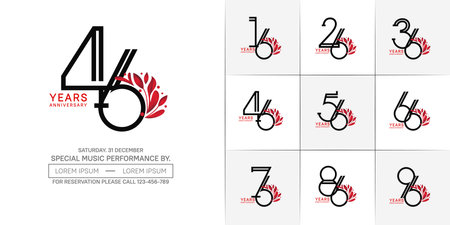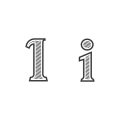Introduction to Moolank and Vedic Astrology
Moolank and Vedic Astrology are two pillars of traditional Indian spiritual wisdom, each offering unique insights into human destiny and personality. The term “Moolank” comes from the Hindi word for “root number,” a concept rooted in numerology that assigns special significance to a persons date of birth. On the other hand, Vedic Astrology, or Jyotish Shastra, is an ancient science that interprets planetary movements and their influence on human lives. Both systems are deeply embedded in Indian culture, shaping rituals, festivals, and personal decisions across generations. Whether it is naming a newborn, selecting an auspicious wedding date, or understanding life challenges, Moolank and Vedic Astrology provide guidance that millions of Indians trust. Their enduring relevance is a testament to the profound role they play in daily life, spirituality, and the collective consciousness of India.
2. What is Moolank? Concept and Calculation
In Indian numerology, especially as practised widely across Bharat, the term Moolank refers to the Root Number, which is derived from an individuals date of birth. The word “Moolank” comes from Sanskrit—‘Moola’ meaning ‘root’ or ‘base’, and ‘ank’ meaning ‘number’. This number holds significant cultural and astrological relevance in the Indian context, often influencing both personality assessment and compatibility analysis.
Concept of Moolank in Indian Numerology
Moolank is believed to represent the core essence of a person’s character, strengths, and challenges. It acts as a foundational element in many traditional systems of prediction and self-understanding, including Vedic astrology and numerological traditions followed by millions across India. Many Indians consult their Moolank before making major life decisions such as marriage, business ventures, or even naming ceremonies.
How to Calculate Your Moolank
The calculation method for Moolank is straightforward and traditionally taught across generations:
- Take your date of birth (day only).
- Add the digits together repeatedly until you arrive at a single digit between 1 and 9.
| Date of Birth Example | Calculation Steps | Moolank (Root Number) |
|---|---|---|
| 23rd July | 2 + 3 = 5 | 5 |
| 14th November | 1 + 4 = 5 | 5 |
| 29th March | 2 + 9 = 11; 1 + 1 = 2 | 2 |
| 6th December | 6 (already a single digit) | 6 |
Cultural Significance and Influence on Traits
The significance of the Moolank extends beyond mere calculation. In Indian society, each Root Number is associated with distinct traits and planetary influences. For instance, individuals with Moolank 1 are linked to leadership qualities and are ruled by the Sun (Surya). Those with Moolank 2 are considered sensitive and diplomatic, connected to the Moon (Chandra). This system not only shapes personal self-perception but also guides social interactions, career choices, and even auspicious timings for rituals.
Moolank Numbers & Associated Traits Table
| Moolank (Root Number) | Main Planetary Influence | Key Personality Traits (Indian Context) |
|---|---|---|
| 1 | Sun (Surya) | Leadership, Ambition, Independence |
| 2 | Moon (Chandra) | Sensitivity, Diplomacy, Creativity |
| 3 | Jupiter (Guru/Brihaspati) | Wisdom, Optimism, Sociability |
| 4 | Rahu (North Lunar Node) | Practicality, Stability, Unconventional Thinking |
| 5 | Mercury (Budh) | Adaptability, Communication Skills, Curiosity |
| 6 | Venus (Shukra) | Aesthetics, Harmony, Compassion |
| 7 | Ketu (South Lunar Node) | Mysticism, Introspection, Spirituality |
| 8 | Saturn (Shani) | Diligence, Discipline, Determination |
| 9 | Mars (Mangal) | Courage, Passion, Assertiveness |
Moolank in Everyday Indian Life
The use of Moolank remains deeply woven into daily routines—from selecting dates for pujas or festivals to understanding relationships within families. For many Indians who believe in both numerology and astrology, knowing one’s Moolank serves as an accessible first step towards deeper self-awareness guided by ancient wisdom.
![]()
3. Core Principles of Vedic Astrology
Vedic astrology, known in India as Jyotish Shastra, is deeply rooted in ancient Indian tradition and continues to play a significant role in the lives of millions. Its foundational elements include planetary influences (Grahas), Rashis (zodiac signs), and Kundli (birth chart), each offering unique insights into an individual’s life path. These principles not only distinguish Vedic astrology from other systems but also establish its connection with numerological concepts like Moolank.
Planetary Influences (Grahas)
The nine Grahas—Surya (Sun), Chandra (Moon), Mangal (Mars), Budh (Mercury), Guru (Jupiter), Shukra (Venus), Shani (Saturn), Rahu, and Ketu—are considered the main celestial bodies impacting human destiny. Their positions at the time of birth are believed to shape one’s personality, career prospects, relationships, and overall fortune. For Indians, the placement of these planets is often referenced during important events such as marriages or business ventures.
Rashis: The Zodiac Signs
There are twelve Rashis in Vedic astrology, corresponding to the familiar zodiac signs: Mesh (Aries) to Meen (Pisces). Each Rashi represents distinct traits and characteristics, influenced by the ruling planet and its placement in the Kundli. Understanding one’s Rashi is integral for matching horoscopes in arranged marriages, a common cultural practice across India.
Kundli: The Birth Chart
The Kundli or Janam Patrika is a detailed astrological chart created based on the exact date, time, and place of birth. It maps out the position of all Grahas in various houses and Rashis at the moment of birth. The Kundli serves as the foundation for predictions related to major life events, doshas, and yogas that can affect an individual’s journey. In many Indian households, Kundli matching remains a crucial step before wedding ceremonies.
Connection with Moolank
While Vedic astrology primarily uses Grahas and Rashis for predictions, it shares a philosophical overlap with numerology through concepts like Moolank—the root number derived from one’s birth date. Both systems aim to reveal deeper truths about personality and destiny, making them complementary tools for self-understanding in Indian culture.
4. Differences Between Moolank and Vedic Astrology
To understand the unique place of Moolank and Vedic Astrology within Indian spiritual traditions, it is essential to compare their core philosophies, calculation methods, and areas of life they address. Both systems are deeply rooted in Indian culture but offer distinct approaches to decoding destiny and guiding personal growth. Below is a side-by-side comparison contextualised for the Indian context.
| Moolank | Vedic Astrology (Jyotish Shastra) | |
|---|---|---|
| Philosophy | Centres on numerology; believes that numbers derived from one’s date of birth carry cosmic significance influencing an individual’s nature and destiny. | Based on ancient Vedas; interprets planetary positions at the time of birth as indicators of karma, life events, and spiritual lessons. |
| Calculation Method | Moolank is calculated by reducing the date of birth to a single digit (1–9). For example, someone born on 23rd becomes 2+3=5. | Uses detailed birth charts (Kundli) based on exact date, time, and place of birth; involves planets (Grahas), zodiac signs (Rashis), and houses (Bhavas). |
| Areas Addressed | Mainly focuses on personality traits, compatibility, and general life trends such as lucky numbers or colours; commonly used in matchmaking and daily guidance. | Covers all spheres of life including career, health, marriage, finances, education, spiritual path; guides major decisions like naming ceremonies or Muhurat selection. |
| Cultural Context | Popular across India for quick predictions and easy-to-understand insights; often used alongside astrology during festivals or family gatherings. | Traditional backbone of Indian culture; rituals like Janam Kundli matching for marriages are considered almost mandatory in many communities. |
| Tools & Practices | Requires only the date of birth; often practised informally or via simple charts in newspapers or almanacs (Panchang). | Involves complex calculations; requires professional astrologers (Jyotish Acharyas) with expertise in scriptures like Brihat Parashara Hora Shastra. |
The above comparison highlights how Moolank offers a simplified, number-based approach accessible to many Indians seeking instant insights, whereas Vedic Astrology provides a holistic view shaped by deep-rooted traditions and rituals. While both share the goal of self-understanding and improving life’s journey, their methodologies reflect the diversity and richness inherent in Indian spiritual sciences.
5. How Moolank and Vedic Astrology Connect
When we examine the connection between Moolank from numerology and the traditional system of Vedic astrology, it becomes clear that both these ancient Indian sciences share common threads in guiding individuals towards self-understanding and life solutions. While Moolank is derived from one’s date of birth and reflects a person’s root number, Vedic astrology (Jyotish Shastra) uses planetary positions at the time of birth to provide insights into personality, destiny, and auspicious timings. Despite their differences in methodology, these two systems often intersect in meaningful ways.
Analysis of Intersections
Both Moolank and Vedic astrology are believed to reveal karmic influences and unique personal traits. Astrologers sometimes analyse a person’s Moolank alongside their Janma Rashi (moon sign) or Lagna (ascendant) to gain a holistic understanding. For example, if someone’s Moolank suggests strong leadership qualities but their horoscope shows challenging planetary positions in the tenth house (Karma Bhava), astrologers may advise remedies that harmonise both aspects for better results. Thus, combining numerology and astrology can provide layered guidance that addresses both inherent nature and cosmic timing.
Traditional Examples in Indian Practice
In many Indian families, especially during major life events like marriage or naming ceremonies (Namkaran), it is common for elders or pundits to consult both the child’s Moolank and astrological chart before making decisions. For instance, an auspicious name might be chosen based on the Nakshatra as well as the Moolank, ensuring compatibility with both systems. Similarly, when facing obstacles such as health concerns or career stagnation, practitioners may recommend remedial measures like chanting specific mantras or wearing gemstones—selected after analysing both the individual’s birth number and planetary influences.
Personalised Remedies and Predictions
The intersection of these systems allows for highly personalised remedies. A person whose Moolank is 5 (associated with Mercury/Budha) and who also has a strong influence of Mercury in their horoscope may be advised to worship Lord Ganesha or observe Budhvar Vrat (Wednesday fasting). This dual consideration aligns remedies with both numerical vibration and planetary strength, which is believed to enhance efficacy according to traditional wisdom.
In summary, while Moolank and Vedic astrology are distinct systems rooted in Indian tradition, their thoughtful combination enriches personal predictions and strengthens remedial outcomes. This holistic approach remains popular among those seeking deeper insight into their lives through age-old Indian wisdom.
6. Common Myths and Cultural Perspectives
When discussing Moolank and Vedic astrology, several misconceptions persist within Indian society. A widespread myth is that both systems are interchangeable or that Moolank is simply a subset of Vedic astrology. In reality, while both have roots in ancient Indian traditions and share the broader goal of guiding individuals, their methodologies, calculations, and philosophical underpinnings differ significantly. Another common belief is that either system guarantees precise predictions about future events; however, practitioners and scholars often emphasise that these sciences are interpretive tools meant for self-awareness rather than deterministic prophecy.
In contemporary India, both Moolank (root number numerology) and Vedic astrology are widely accepted, yet their applications differ based on region, community, and personal preference. For instance, urban youth may consult numerologists for name changes or auspicious dates due to the growing influence of social media and celebrity endorsements. Conversely, Vedic astrologers remain sought after for rituals like marriage matching (kundli milan), muhurat selection, and family pujas. It is also a myth that only the older generation values these practices; surveys reveal increasing interest among millennials, especially during significant life milestones.
Cultural perspectives also shape how these systems are perceived: Moolank is sometimes regarded as more accessible due to its simplicity (based largely on ones birth date), while Vedic astrology is seen as more complex and traditional. Furthermore, there exists a misconception that consulting astrologers or numerologists is only for the superstitious or less educated. On the contrary, many highly educated Indians—including professionals in IT, medicine, and business—openly acknowledge seeking astrological guidance.
It is important to recognise that both systems coexist harmoniously in Indias diverse spiritual landscape. Their acceptance reflects Indias syncretic culture where ancient knowledge adapts to modern realities. By addressing myths and understanding their cultural relevance, one can appreciate how Moolank and Vedic astrology continue to offer meaning and direction in contemporary Indian life.
7. Conclusion: Integrating Moolank and Vedic Wisdom
As we reach the culmination of our exploration into Moolank and Vedic astrology, it becomes evident that both systems, rooted in the rich tapestry of Indian tradition, offer profound insights into self-understanding. While Moolank focuses on the vibrational essence of your birth date through numerology, Vedic astrology delves deeper into planetary influences and cosmic patterns guiding your lifes journey. Respecting both methods means acknowledging their unique origins and strengths—Moolank with its numerical simplicity and daily applicability, and Vedic astrology with its intricate chart analysis and lifelong guidance.
In contemporary India, where rapid modernization sometimes distances us from ancestral wisdom, integrating these two approaches can bridge traditional knowledge with modern living. For instance, understanding your Moolank can help you align daily decisions, auspicious timings, and personal growth strategies, while Vedic astrology can provide a broader perspective on karmic lessons and life cycles. Many Indians today use both systems together for making career choices, marriage compatibility assessments, or even for naming ceremonies—honouring the holistic view our culture has always celebrated.
Ultimately, combining Moolank and Vedic astrology is not about choosing one over the other but about synthesising their insights for a more complete self-awareness. By respecting their differences and appreciating their connections, individuals can make more informed decisions in all spheres of life—be it professional endeavours, personal relationships, or spiritual growth. This harmonious integration echoes the core value of Indian philosophy: unity in diversity. As you continue your journey of self-discovery, let Moolank guide your everyday actions while Vedic astrology illuminates your life’s larger purpose—creating a balanced path that honours both tradition and personal evolution.


